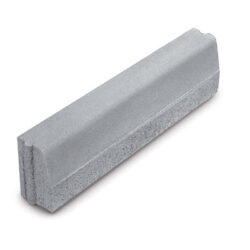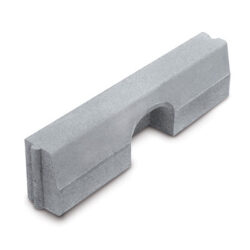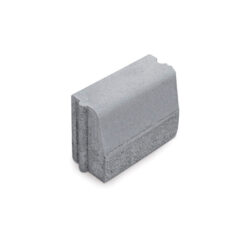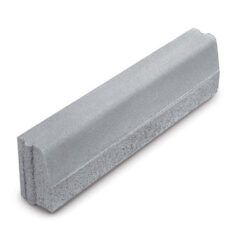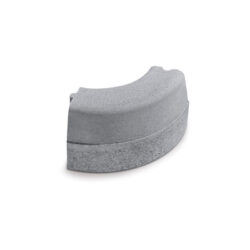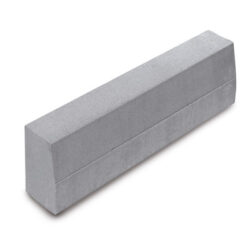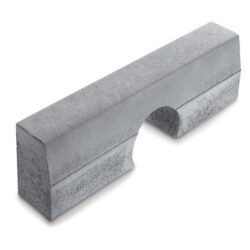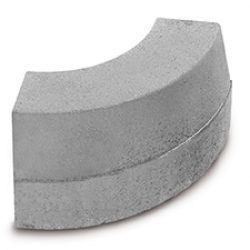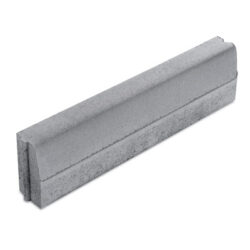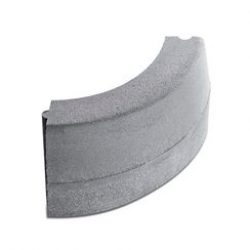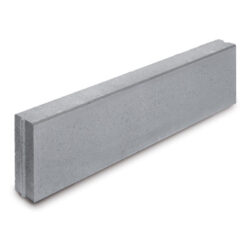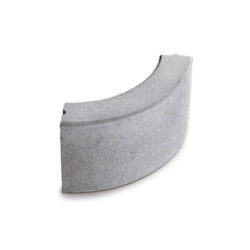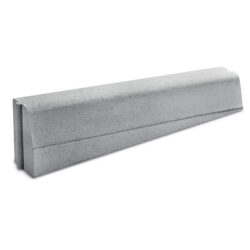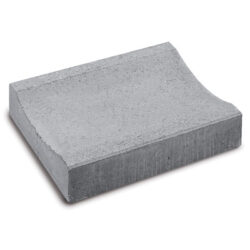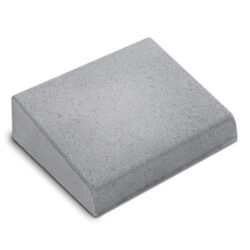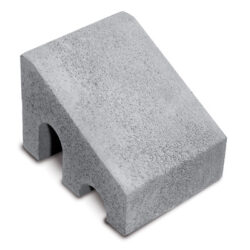Double base layer curb
These curbs are produced with double-layer concrete, that is, the visible part of the curb is made with aggregates specially selected to obtain a homogeneous and smooth surface on the entire curb to give the product high performance characteristics. The effects of freezing temperatures, freeze-thaw cycle and de-icing salts on concrete curbs are well known. The increase in the volume of the water (about 10%) when frozen, can break the surface layers compromising its compliance with safety standards. De-icing salts (usually composed of chlorides and ammonia compounds), used to prevent the formation of surface ice on roads, viaducts, and outdoor pavements, can facilitate degenerative phenomena of concrete.
These concrete curbs were subjected to 28-day freeze-thaw cycles in cold rooms specially calibrated to produce a temperature range of 40°C (from about 20°C to -20°C for each cycle). At the end of the test, the weight loss was measured (due to the parts that actually detached or disintegrated); the following table reports the results in figures.
